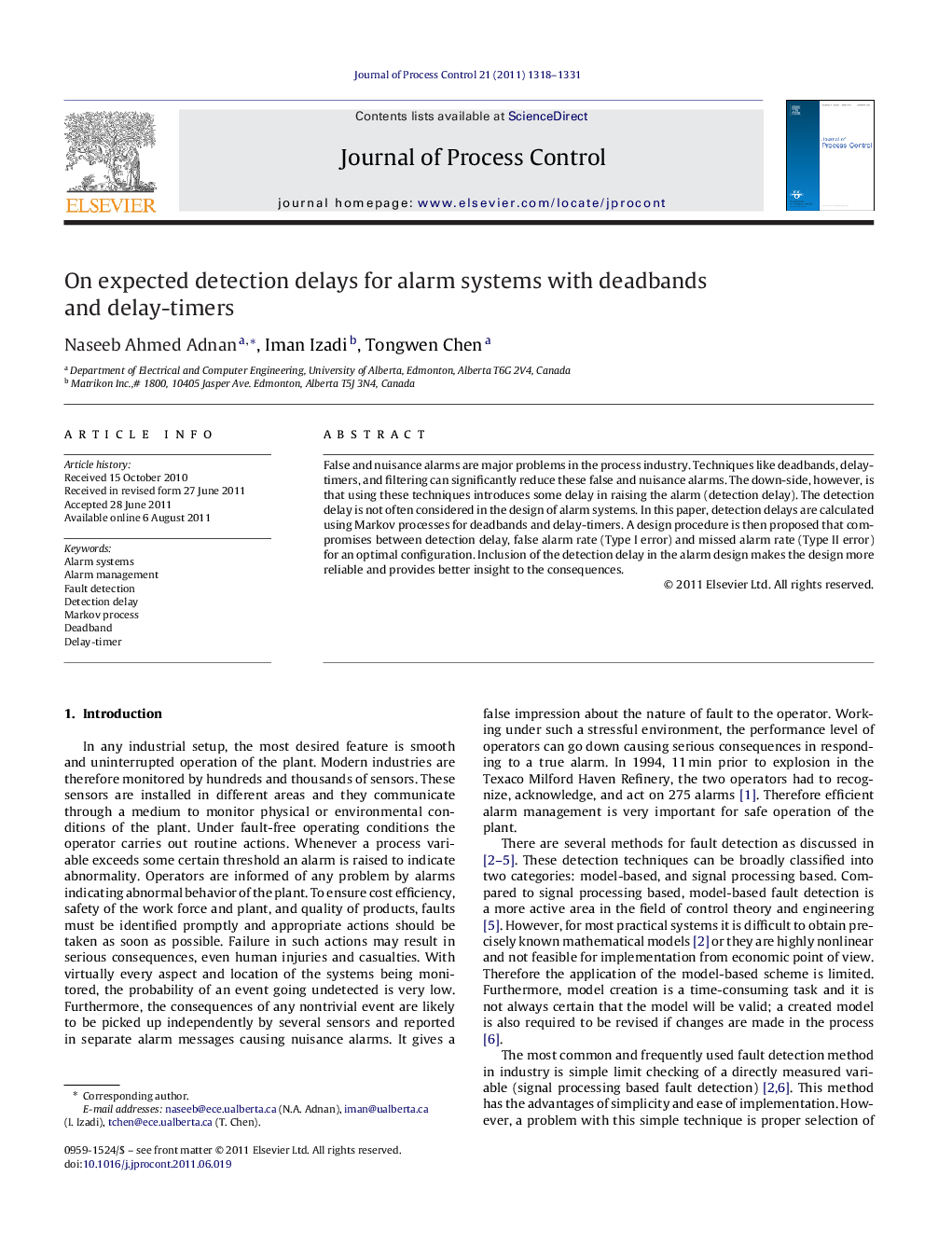| کد مقاله | کد نشریه | سال انتشار | مقاله انگلیسی | نسخه تمام متن |
|---|---|---|---|---|
| 689634 | 889623 | 2011 | 14 صفحه PDF | دانلود رایگان |

False and nuisance alarms are major problems in the process industry. Techniques like deadbands, delay-timers, and filtering can significantly reduce these false and nuisance alarms. The down-side, however, is that using these techniques introduces some delay in raising the alarm (detection delay). The detection delay is not often considered in the design of alarm systems. In this paper, detection delays are calculated using Markov processes for deadbands and delay-timers. A design procedure is then proposed that compromises between detection delay, false alarm rate (Type I error) and missed alarm rate (Type II error) for an optimal configuration. Inclusion of the detection delay in the alarm design makes the design more reliable and provides better insight to the consequences.
► Detection delay is caused by delay-timers and deadbands in alarm systems.
► Derived equations can be used to estimate the delay from historical process data.
► Changes in operating limits, deadbands or delay-timers affect detection delays.
► An alarm systems design balancing the FAR, the MAR and the EDD is discussed.
Journal: Journal of Process Control - Volume 21, Issue 9, October 2011, Pages 1318–1331